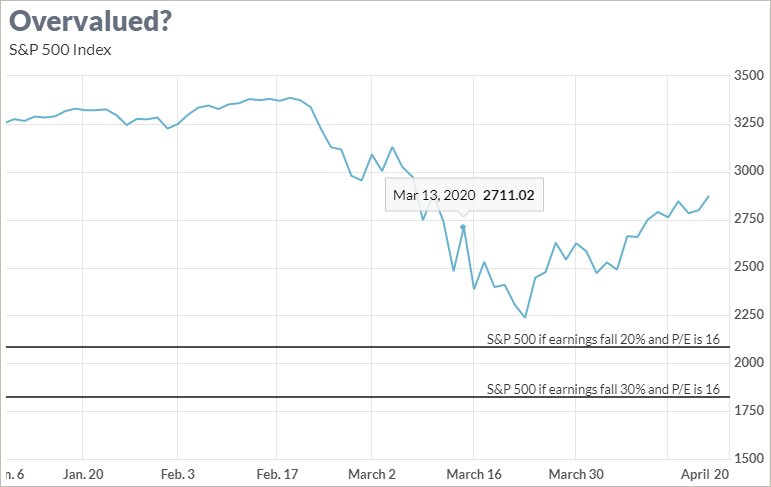Charles Dumas, a veteran of General Motors in the 1970s and JPMorgan in the 1980s, has seen a market downturn or two.

Published: April 20, 2020 at 9:40 a.m. ET, By Steve Goldstein
Now chief economist at TS Lombard in London, Dumas recalls a story told by TS Lombard colleague Larry Brainard, when Mexico in August 1982 told the U.S. and the International Monetary Fund it couldn’t service its debt.
About a month later at the IMF’s meetings, few were concerned, Brainard recalled.
“What in fact [Mexico’s announcement] was, was a sign of the so-called MBA problem (Mexico, Brazil, Argentina) — and six months later, everyone realized just how much trouble there was,” Dumas says.
He uses that as analogous to why the current stock market isn’t correctly pricing in the economic deterioration.
Consumer spending is getting obliterated at the moment, and won’t recover quickly once the shutdowns across the U.S. and Europe are lifted, in part because of the virus risk at sports events, theaters, restaurants and bars.
He notes that consumer spending is larger than labor income — which itself is getting ravaged because of the spike in unemployment — because of profit income. “Profit income is likely to be very bleak indeed in the second quarter, causing a knock-on effect towards more savings,” he says.
Tax cuts won’t lead to much in the way of consumer spending, and businesses will cut capital spending aggressively.

The U.S. economy will probably fall at an annual rate of around 20% in the second quarter, and will fall further in the third quarter.
He said the firm’s modeling suggests earnings per share will fall about 20% and 30% this year. Giving the S&P 500 a price-to-earnings ratio of about 16 for a “reasonably depressed environment,” leads to an S&P 500 below 2000.
The S&P 500 SPX closed Friday at 2,874.
“You’ve got a situation where people are conditioned to the idea that somehow the stock market will always go up if the Fed is on its side,” Dumas says. “But that just doesn’t have to be true in this situation where the economy is the problem.”
The release of the April jobs report could cause markets to reassess, he says.
The downturn in the price of oil is an indication that the deterioration in the economy may be even worse than what he is imagining.
“I would put this whole situation down to a lack of understanding of the lack of efficacy of monetary policy in the context of an economy which is cratering for social and medical reasons,” he says.
Source: www.marketwatch.com